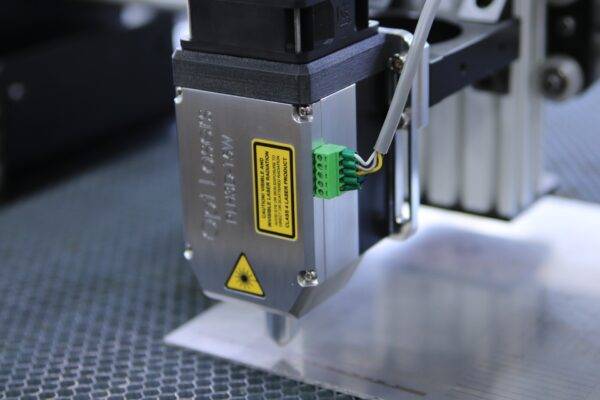The global trade landscape has a profound impact on various industries, and CNC manufacturing is no exception. As the backbone of modern manufacturing processes, CNC technology has revolutionized the production of complex components, machinery, and consumer goods. However, the trade dynamics and policies across the globe significantly influence CNC manufacturers, shaping their strategies, competitiveness, and future prospects.
In this blog, we will explore the implications of the global trade landscape on CNC manufacturing and delve into the challenges and opportunities that arise from navigating this ever-changing environment.
Trade Agreements and Tariffs
Trade agreements between countries play a crucial role in promoting international trade and influencing CNC manufacturing. These agreements can facilitate easier access to foreign markets, reduce tariffs, and streamline customs procedures, enhancing the global supply chain. On the flip side, trade tensions and tariffs between major economies can disrupt the flow of raw materials and finished goods, impacting CNC manufacturers’ cost structure and competitiveness.
For CNC manufacturers, it is essential to stay abreast of evolving trade agreements and tariff regulations, as they can impact production costs and affect international sales. Engaging in strategic partnerships or establishing facilities in countries with favorable trade agreements can be an effective way to mitigate risks and maximize benefits.

More examples of worldwide trage agreements and tariffs
As of my last update in September 2021, I can provide some general examples of trade agreements and tariffs that may have been relevant to the CNC industry. However, please note that specific agreements and tariffs may have changed or been updated since then, so it’s essential to refer to the most current information from authoritative sources and trade organizations.
- The NAFTA fostered a cooperative trade environment among the United States, Canada, and Mexico. This agreement aimed to enhance economic ties and boost commerce between the three nations. By reducing or eliminating tariffs on numerous CNC industry products, NAFTA facilitated the smooth exchange of goods and services within the member countries.
- United States-Mexico-Canada Agreement (USMCA): USMCA replaced NAFTA and was implemented in July 2020. This trade agreement retained many provisions from NAFTA but also introduced some updates and changes. The CNC industry could still benefit from reduced trade barriers between the United States, Canada, and Mexico under this agreement.
- Comprehensive and Progressive Agreement for Trans-Pacific Partnership (CPTPP): CPTPP, also known as TPP-11, is a revised version of the TPP after the United States’ withdrawal. 11 countries in the Asia-Pacific region, including Canada and Mexico. The agreement aims to promote trade and economic integration among the member countries, which can benefit the CNC industry by reducing tariffs and other trade barriers.
- Tariffs on CNC machinery and components: Many countries have implemented tariffs on CNC machinery and related components to protect domestic industries or address trade imbalances. These tariffs can significantly impact the cost and accessibility of CNC equipment and parts for manufacturers.
It’s important to emphasize that trade agreements and tariffs are subject to change and renegotiation based on economic and political factors. For the most current information on trade agreements and tariffs within the CNC industry, I recommend consulting official government websites, trade organizations, and relevant industry publications.
Supply Chain Resilience
The COVID-19 pandemic exposed vulnerabilities in global supply chains, affecting CNC manufacturing worldwide. Disruptions in raw material availability, transportation, and labor caused significant challenges for manufacturers. As a result, many companies began reevaluating their supply chain strategies, focusing on building resilience and reducing dependencies on a single region or supplier.

To navigate the global trade landscape successfully, CNC manufacturers need to diversify their supply chains, identify alternative sources for critical materials, and develop contingency plans to mitigate potential disruptions. Embracing digital technologies like AI-driven supply chain management and real-time tracking can enhance visibility and responsiveness.
While there may have been advancements in Supply Chain Resilience within CNC beyond that date, here are a few examples up until that point:
- Advanced Demand Forecasting: Integration of AI and machine learning algorithms to predict demand patterns more accurately, reducing the risk of overstocking or stockouts in the supply chain.
- Real-Time Monitoring and Analytics: Implementation of sensors and IoT devices on CNC machines and throughout the supply chain to track machine performance, inventory levels, and logistics in real-time. This allows for proactive issue detection and timely decision-making.
- Diversified Supplier Networks: Companies exploring multiple sourcing options and establishing relationships with suppliers from different regions, reducing the impact of disruptions caused by geopolitical, economic, or natural factors.
- Supply Chain Digitization: Increasing the adoption of digital technologies such as blockchain to improve transparency, traceability, and accountability in the supply chain. This enhances risk management and strengthens the overall resilience of the CNC manufacturing process.
- Collaborative Risk Management: Encouraging collaboration and information-sharing among supply chain partners to identify and address potential vulnerabilities collectively. This includes conducting risk assessments, sharing best practices, and developing joint contingency plans.
- Resilient Inventory Strategies: Implementing buffer stock strategies and dynamic safety stock calculations to respond effectively to fluctuations in demand or supply interruptions, while optimizing inventory carrying costs.
- Redundancy in Production Capability: Having redundant CNC machines or manufacturing facilities strategically located in different regions to continue production in case of localized disruptions.
- Transportation Flexibility: Developing flexible transportation options, such as alternative shipping methods and multiple carrier relationships, to ensure goods can reach their destinations even in the face of transportation disruptions.
- Scenario Planning and Simulation: Using advanced simulation tools to model various supply chain scenarios and assess their impact on the CNC manufacturing process. This aids in making informed decisions and identifying vulnerabilities before they occur.
Intellectual Property Protection
Intellectual property (IP) theft remains a critical concern for CNC manufacturers as they expand their presence in international markets. Advanced CNC machines and the expertise behind them are valuable assets that require protection from unauthorized use and replication.
Engaging in business with countries that uphold robust IP laws and enforcement mechanisms can safeguard CNC manufacturers’ innovations and technological advancements. Prioritizing confidentiality agreements, patent registrations, and trade secret protection are essential steps to secure proprietary information when engaging in cross-border collaborations.
More things to keep in mind
- Digital Rights Management (DRM): Integrating DRM systems into CNC software to prevent unauthorized copying or distribution of design files and programs, ensuring better protection for proprietary designs and intellectual property.
- Watermarking and Encryption: Implementing techniques to add watermarks or encryption to CNC design files, which can help identify the source and ownership of the designs and discourage unauthorized use or reverse engineering.
- Secure Data Transfer: Developing secure methods for transferring CNC design files and programs between devices and machines, reducing the risk of data leaks and ensuring that proprietary information remains protected.
- Authentication and Access Control: Implementing robust authentication measures to control access to CNC machines and software, limiting access only to authorized personnel and preventing unauthorized use or tampering with intellectual property.
- Patent and Copyright Integration: Companies developing CNC technologies may seek patents to protect novel and non-obvious aspects of their inventions, while copyright can safeguard software code and other creative expressions used in CNC systems.
- International Agreements and Standards: Establishing international agreements and standards to streamline IP protection across borders, fostering collaboration while safeguarding the interests of inventors and companies.
- Data Ownership and Usage Policies: Implementing clear data ownership and usage policies to define the rights and responsibilities of users, developers, and manufacturers concerning CNC-related intellectual property.
Access to Skilled Labor
Global trade dynamics can significantly influence the availability of skilled labor in CNC manufacturing. Changes in immigration policies, labor market conditions, and regional economic disparities can impact the accessibility of qualified CNC operators, programmers, and engineers.

Manufacturers must invest in workforce development, fostering local talent, and promoting continuous upskilling to meet the demands of CNC manufacturing. Additionally, forming partnerships with educational institutions and participating in vocational training initiatives can help address the skills gap.
Anticipate potential problems
- Shortage of skilled CNC operators and technicians in the job market.
- Lack of formal training programs and educational opportunities for individuals interested in pursuing a career in CNC operations.
- Rapid technological advancements in CNC machinery requiring continuous skill development, leading to an outdated skillset among existing operators.
- High turnover rates due to competition among employers for skilled CNC workers, making it challenging for businesses to retain experienced staff.
- Geographic disparities in the availability of skilled labor, with certain regions having a more significant pool of CNC talent than others.
- The perception of CNC jobs as being physically demanding or repetitive, which may deter potential candidates from entering the field.
- A mismatch between the skills demanded by employers and the skills possessed by job seekers, resulting in unfilled positions.
- Aging workforce in the CNC industry, leading to potential skill gaps as experienced workers retire without sufficient replacements.
- Inadequate diversity and inclusivity in the CNC labor force, limiting the talent pool and potential for fresh perspectives and innovations.
- Insufficient collaboration between industry stakeholders, educational institutions, and government agencies to address the issue of access to skilled labor for CNC.
Emerging Market Opportunities
The global trade landscape also presents exciting opportunities for CNC manufacturers in emerging markets. As developing economies undergo industrialization and experience a rise in consumer demands, there is a growing need for CNC-produced goods.
CNC manufacturers can capitalize on these opportunities by conducting market research, understanding cultural nuances, and adapting their products to meet local preferences. Moreover, establishing a strong local presence and building relationships with distributors and partners in these markets can be crucial for sustainable growth.
